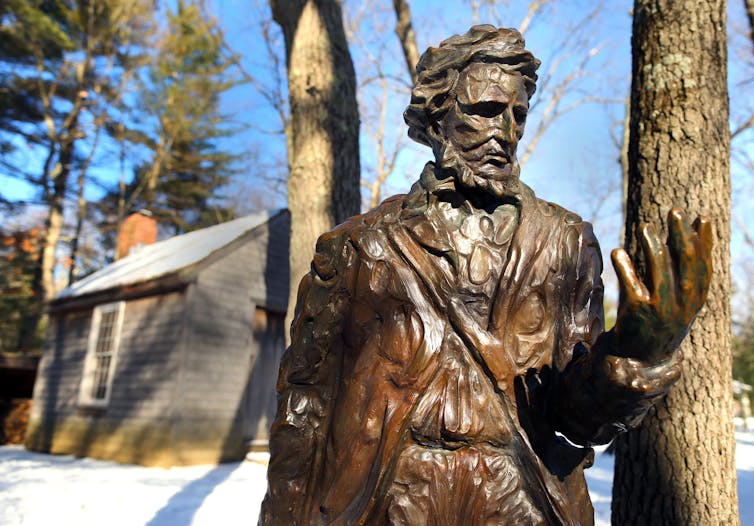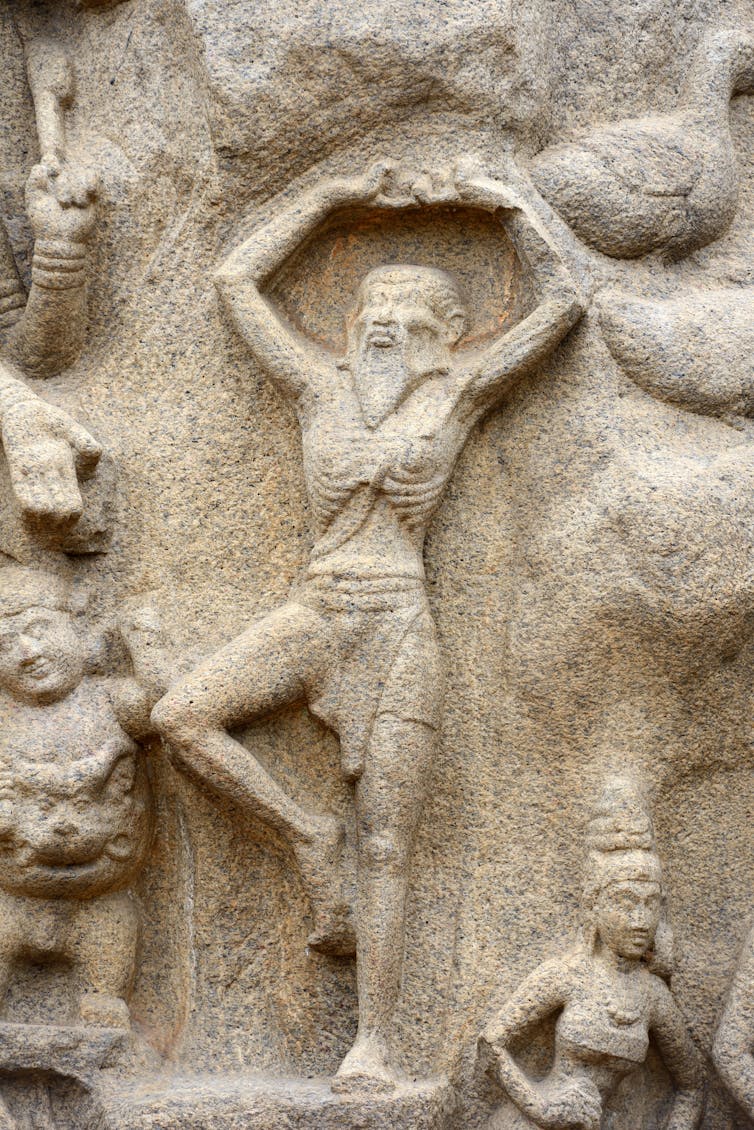
International Yoga Day, dedicated to celebrating yoga as part of the “intangible cultural heritage of humanity,” has proved controversial since its inception in 2015.
To celebrate the day on June 21, yoga gatherings are held in many parts of the world, but there are also devoted yogis who refuse to participate, saying the holiday is designed to covertly promote a right-wing Hindu fundamentalist agenda.
Some also protest the crass commercialism of the holiday and contemporary yoga culture more generally.
I am a scholar who studies communication, yoga and meditation, and I mark this day each year by taking the opportunity to learn more about the long and complex global history of yoga. A 19th-century thinker I often study on this day is Henry David Thoreau.

Thoreau and yoga at Walden Pond
Thoreau was member of the cadre of 19th-century American essayists, poets and social activists known as the Transcendentalists. The Transcendentalists were famous, in their time, for their interest in Indian and other forms of non-Western thought.
As I explain in my recent book “The Ethics of Oneness: Emerson, Whitman, and the Bhagavad-Gita,” the Transcendentalists were active participants in a cultural conversation that struggled to understand how philosophies of yoga might apply to an individualistic nation like the United States.
From 1845 to 1847, Thoreau spent two years living in a cabin he built at Walden Pond in Concord, Massachusetts. While living off the land and working on his first book, he also spent significant time contemplating yoga philosophy. In fact, when he returned from the woods, he reported to an admirer: “To some extent, and at rare intervals, even I am a yogin.”

According to the religious studies scholar Richard Davis, “Thoreau was likely the first American to entertain seriously the possibility of identifying himself as a yogi.”
Thoreau did not practice asana or the physical postures of yoga, as millions of people do today, but he was a serious student of yoga philosophy. Contemporary students of yoga might find Thoreau’s thoughts on the philosophy of yoga, and in particular karma yoga, the yoga of selfless action, worthy of consideration.
The Bhagavad-Gita on yoga and duty
Thoreau approached the Bhagavad-Gita, a central episode in the ancient Indian epic Mahabharata, as a book of philosophy and ethics that addressed deep and abiding questions about how to live a good life.
The Mahabharata describes a devastating conflict over succession. The Bhagavad-Gita begins when, right on the cusp of war, the greatest warrior of the age, Arjuna, throws down his weapons on the battlefield, refusing to fight his own relations. His charioteer Krishna, who eventually reveals himself to be God, attempts to convince Arjuna to fight by teaching him three types of yoga: bhakti yoga, the yoga of devotion; jnana yoga, the yoga of sacred knowledge; and karma yoga, the yoga of selfless action. It was th last concept that preoccupied Thoreau.
According to Krishna in the Bhagavad-Gita, practicing karma yoga entails acting without consideration for the personal benefits, or “fruits,” of an action. It means doing one’s duty steadfastly, without fear or shame or remorse. It also means letting go of concern for the consequences of one’s actions on others or the natural world.
Krishna contends that Arjuna’s duty is determined for him by his membership in the warrior caste. Arjuna’s practice of karma yoga means embracing his duty to fight for the good of the kingdom, though to do this he will have to kill his friends and family. Embrace his duty, Krishna concludes, and there is no need to panic.
Thoreau on the Bhagavad-Gita
Thoreau borrowed fellow Transcendentalist Ralph Waldo Emerson’s copy of the Bhagavad-Gita – the 1785 Charles Wilkins translation – and reported reading it each morning during his time living at Walden Pond.
Thoreau admired the Bhagavad-Gita. However, he pronounced Krishna’s central argument about karma yoga “unconvincing.” Thoreau writes: “Kreeshna’s argument, it must be allowed, is defective. No sufficient reason is given why Arjoon should fight. Arjoon may be convinced, but the reader is not.”
Krishna asserts that it is Arjuna’s duty to fight, but Thoreau concludes that “the duty of which he speaks is an arbitrary one.” By arbitrary, he means it is based on a model of society designed to benefit some people at the expense of others.

Learning from Thoreau on karma yoga
Thoreau models a way of reading yoga philosophy that is concerned, first and foremost, with its practical utility for the time and place we live.
Inspired by Thoreau, whenever I encounter a presentation of yoga, I ask: Is this yoga serving the creation and maintenance of the type of world I want to live in, a world that I honestly consider to be good?
In this spirit, Thoreau challenges individuals to question arguments about duty, like the one Krishna makes in the Bhagavad-Gita, by asking whose interest such arguments serve – and to consider what duty actually means to us.
Yoga is ancient, but it is not timeless. As scholars have shown, there is no one “authentic” yoga, because there are, and have always been, many ways to practice yoga, both in India and abroad. Yoga is a practice of global and religious diversity – there are Hindu, Buddhist and Jain yogas, as well as yogas that are “spiritual but not religious” and also atheistic.
And that is what the United Nations calls on us to celebrate: yoga as part of humanity’s global heritage. In celebrating this heritage, it is worthwhile to heed a lesson from the first American yogi and continue asking questions.
Jeremy David Engels does not work for, consult, own shares in or receive funding from any company or organization that would benefit from this article, and has disclosed no relevant affiliations beyond their academic appointment.
This article was originally published on The Conversation. Read the original article.







